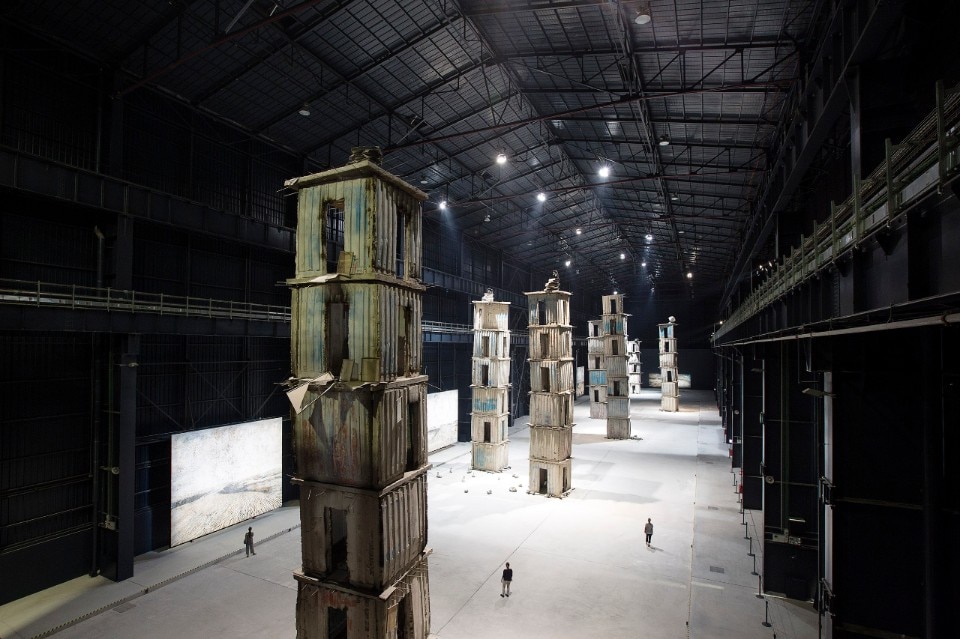The guiding principle of Pirelli HangarBicocca, a prominent institution in Milan, is “Art To The People”, reflecting its two-decade commitment to making contemporary art accessible to a broad audience. With twenty years of activity under its belt in 2024, the “Hangar” cultural initiative, affectionately referred to as such by locals in Milan, has created a deep connection with the city and its residents, bringing to life a one-of-a-kind venue in Italy that embodies an international flair and is open to the public free of charge. Here you can walk around for as long as you like, gazing up at Anselm Kiefer's Seven Heavenly Palaces and enjoying an interesting program of major exhibitions.
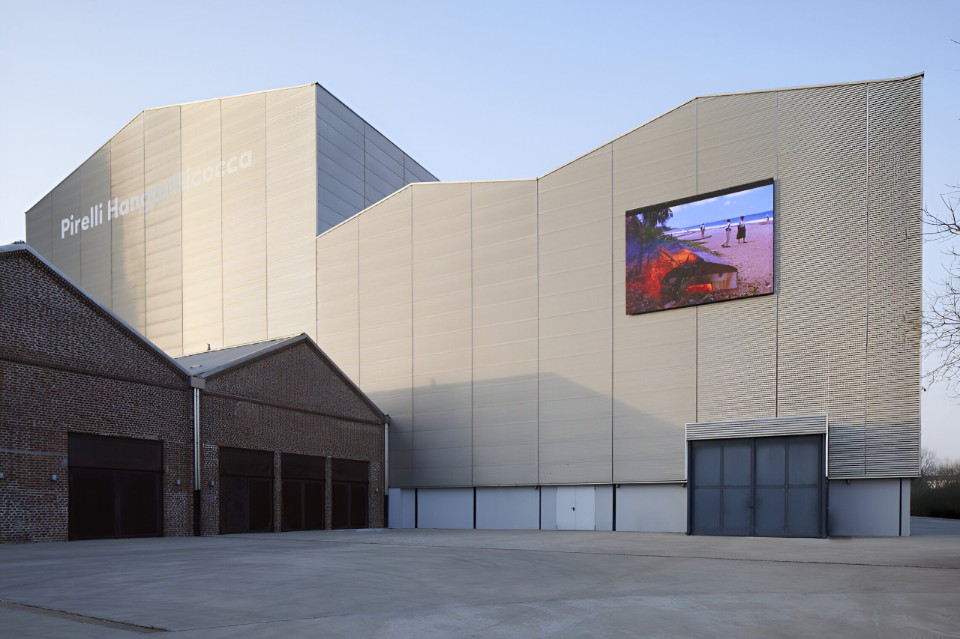
Over the past twenty years, Milan has experienced a significant enhancement in its artistic reputation on the global stage, with the opening of new foundations and galleries, and Pirelli HangarBicocca is undoubtedly a place that cannot be missed in the itineraries of art-enthusiast tourists, and that is also a reference for the leisure time of those who live in the city.
For this reason, Domus is here to tell you the history of this institution, from the industrial archaeology project of the building in which it is located, to the exhibitions that have marked its path, to the permanent works: here is everything you need to know before planning your visit.
The history of the building: from Breda production site to a center for contemporary art
The history of the Pirelli HangarBicocca building is closely connected to that of the Bicocca district, northeast of Milan, which starting in the early twentieth century became one of the most industrialized areas in northern Italy thanks to companies such as Breda, Pirelli, Falck and Marelli who established their production sites here.
The three exhibition spaces now called Navate, Cubo, and Shed were built between the 1950s and the mid-1960s, on an area of about fifteen thousand square meters, and were owned by Breda Elettromeccanica and Locomotive. Their intended use was related to the production of components for locomotives and agricultural machinery, and the assembly and testing of high-powered electrical machines.
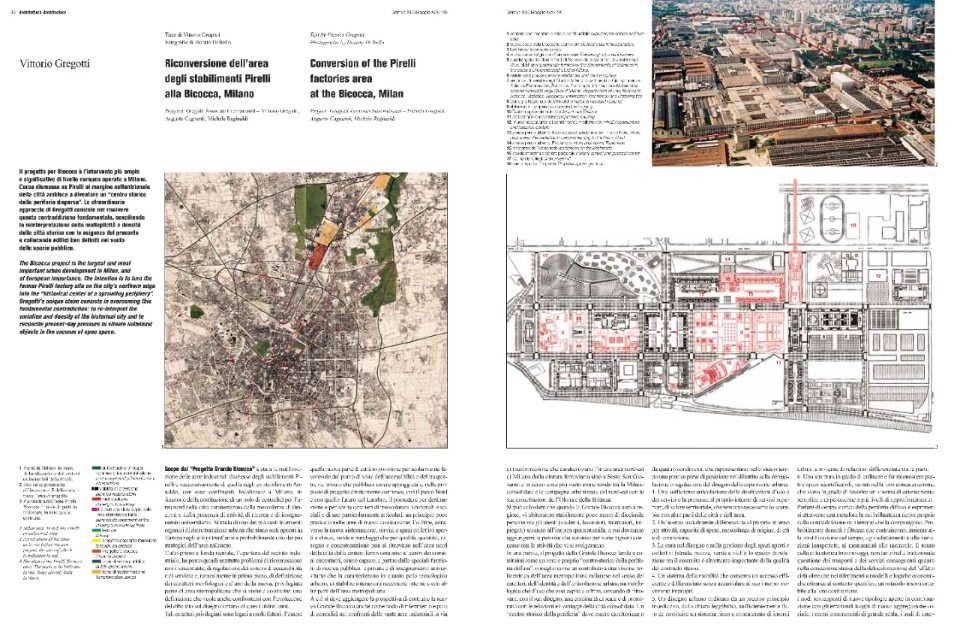
From the mid-1980s, the decommissioning of the industrial areas and the subsequent redevelopment of the entire neighborhood began, promoted with a call for tenders by Pirelli in agreement with the City Council and the Lombardy Region, which was won by Vittorio Gregotti's highly rational design. Following the construction of the University and the Arcimboldi Theater, in the mid-1990s, Pirelli RE bought from the Ansaldo Group (to which Breda had sold its operations) the complex we know today as Pirelli HangarBicocca, which since 2004 has been the venue for temporary exhibitions and the location of one of the best-known permanent installations in Europe, Anselm Kiefer's I Sette Palazzi Celesti 2004-2015 by Anselm Kiefer.
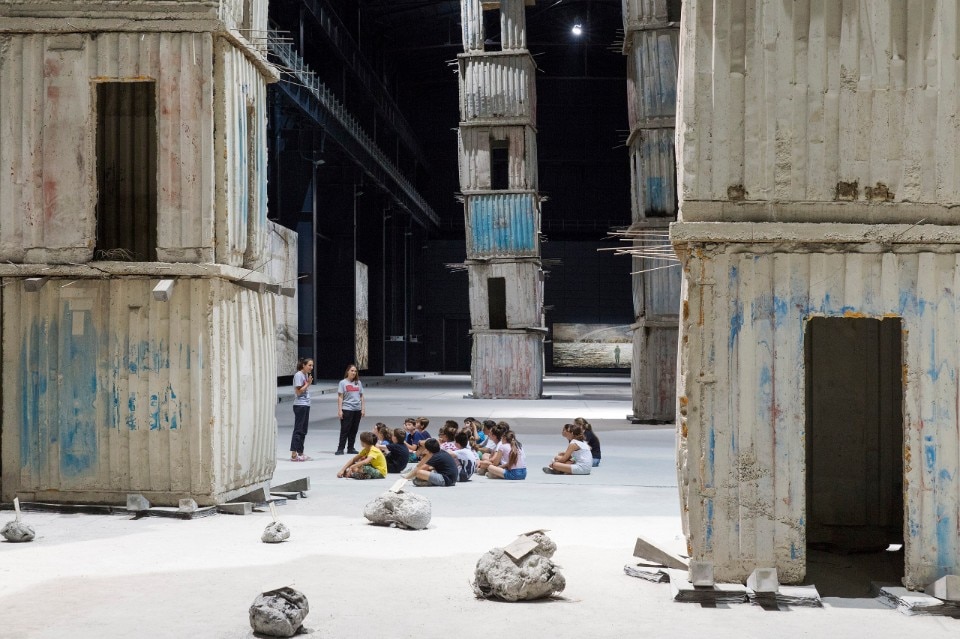
In 2012 Pirelli decided to reinvigorate the place, redesigning this space with a strong industrial footprint as a larger cultural project in order to turn it into an art hub with an international profile, which would also be a reference for the neighborhood and the city, and open to the public free of charge.
Pirelli HangarBicocca's exhibition programming: fluid, international and in dialogue with the space
With a rhythm of four temporary exhibitions per year, two in the Shed space and two in the Navate, Pirelli HangarBicocca is configured as a fluid and dynamic context designed to accommodate artistic practices that are free from conventional schemes. The two exhibition spaces host names from different paths and generations: the Shed is intended for projects by younger artists, while the grandeur of the Navate welcomes solo shows and retrospectives by major artists who are either historicized or widely established on the international scene.
I don't think there is one History of Art with a capital H, but multiple histories.
Vicente Todolí
"This is why we continue to imagine site-specific retrospectives, so that they are unique in relation to these spaces, but tell the present in many different ways. The goal has always been to produce knowledge, making contemporary art accessible to everyone, according to what our hashtag #arttothepeople declares," Vicente Todolí, artistic director, explains to Domus.
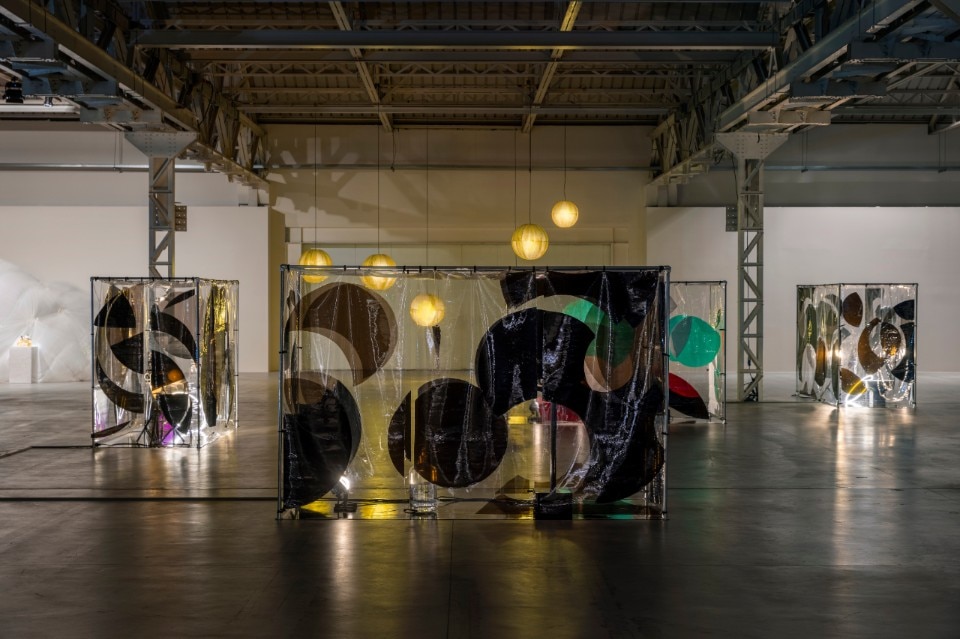
The challenges of the Foundation's curatorial team-which currently sees Vicente Todolí as artistic director, and Roberta Tenconi as head curator, flanked by the two curators Lucia Aspesi and Fiammetta Griccioli-begin with the challenge of dealing with the invited artists and the spatial coordinates of a building that carries an important personality, but also with the consideration of the target audience of visitors. Expanding the audience does not imply abandoning the educated and specialized segment that would be willing to pay a ticket in order to access a high-profile contemporary art experience.
Speaking to the many does not mean giving up speaking in depth, which is why the institution's exhibition projects make use of the presence in the room of museum mediators, specialized in contemporary art, who have the task of making the contents of each exhibition more accessible to the less expert audience, identifying effective, inclusive and never simplifying keys to interpretation, capable of creating bridges between the work and the viewer. Similarly, the institution also devotes special attention to younger audiences and schools, through specially designed educational workshops led weekly by Arts Tutors, responsible for educational mediation.
Furthermore, the past year has seen the activation of free guided tours and creative workshops for adults and children in Italian Sign Language (LIS) with voicing in Italian, along with the production of an audio-videoguide in LIS dedicated to Kiefer's work The Seven Heavenly Palaces, and a guidebook designed according to easy-to-read parameters for people with intellectual disabilities, both of which are available on the foundation's website.
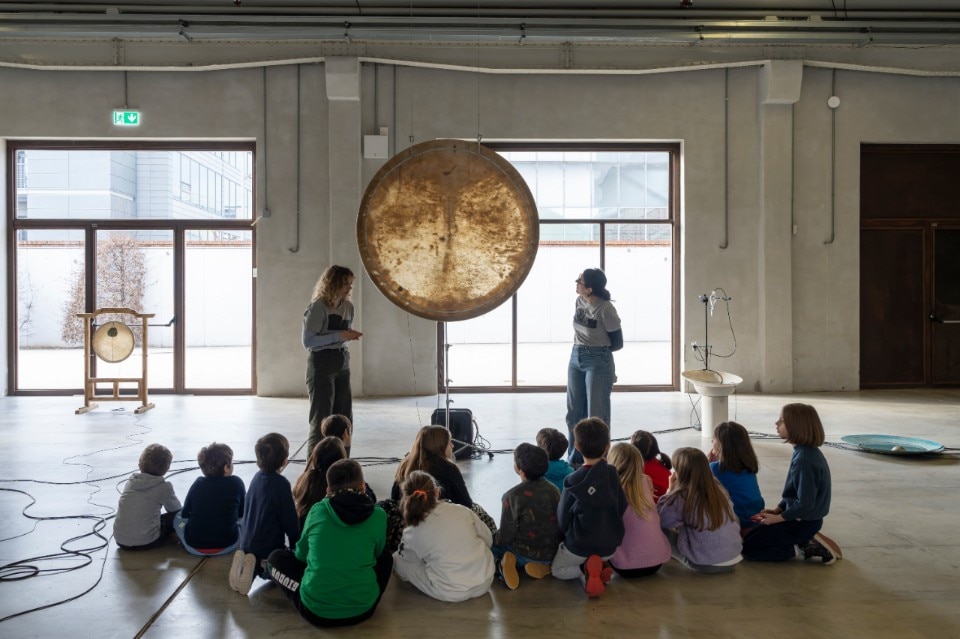
Given the absence of a permanent collection, the very identity of the place is built around the artists and exhibition projects that come alive in the space, transforming it from time to time.
Memorable exhibitions have followed during the Foundation's two decades of activity: how can we forget Tomás Saraceno's “bubble” suspended in the Cube, then Joan Jonas, Phill Niblock, Dieter and Bjorn Roth, Céline Condorelli, Ragnar Kjartansson, and Philippe Parreno, to name a few that were staged under the supervision of Andrea Lissoni, curator of the Milan institution until 2015.
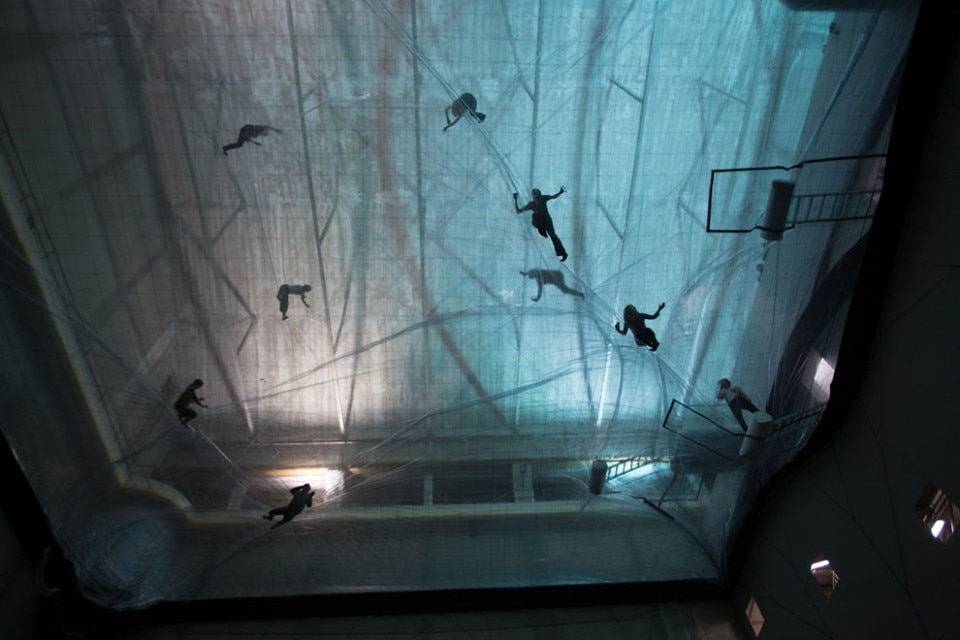
More recent are the retrospectives realized by the current curatorial team dedicated to Lucio Fontana, Mario Merz, Steve Mc Queen, Bruce Nauman, James Lee Byars, and Jean Tinguely, up to the exhibitions currently underway at the moment, by Japanese artist Yukinori Yanagi and Lebanese artist and composer Tarek Atoui, and then to those that will feature Japanese artist Yuko Mohri and American photographer Nan Goldin in the Fall 2025 programming.
From a formal point of view, the perception of space is part of HangarBicocca's poetics: artists and curators work on the interaction between the works and the post-industrial architecture, sometimes emptying it out as in the case of Maurizio Cattelan's exhibition in 2021, or rediscovering its details, as happened with the opening of the skylights on the occasion of Ann Veronica Janssens' exhibition in 2023.
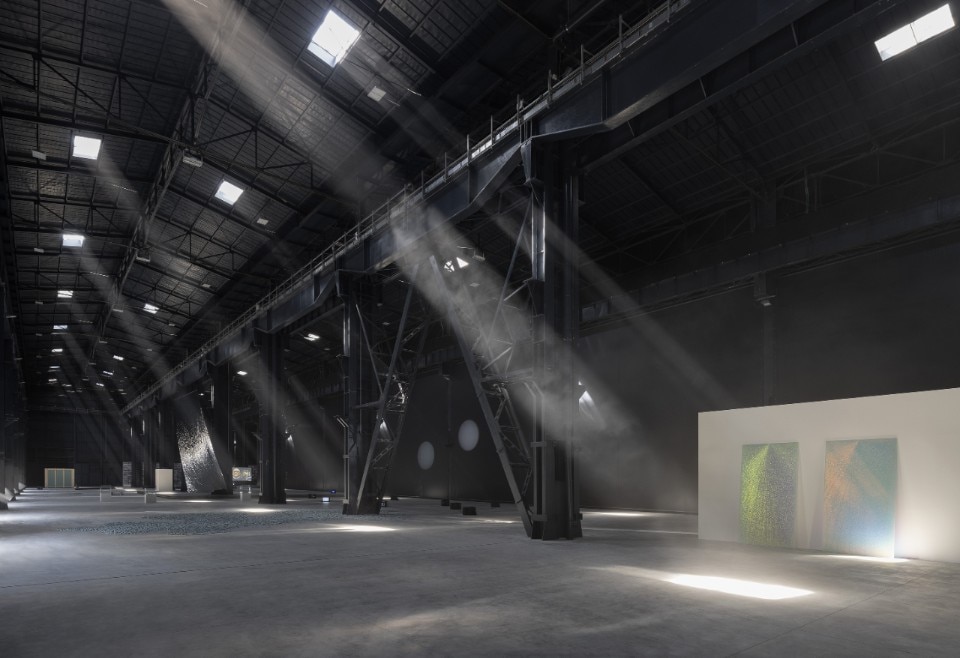
Thematically, on the other hand, the exhibition projects offer visions ranging from historical memory to ecological transformations, from social and political dynamics to the evolution of technology and perceptions. Each exhibition takes the form of an experience in which art becomes a tool for critical reading of the world and an opportunity for dialogue with the public.

Kiefer's The Seven Heavenly Palaces and other permanent works at Pirelli HangarBicocca
As of today, the fifteen thousand square meters of Pirelli HangarBicocca house three permanent works that can be viewed throughout the year, alongside the programming of temporary exhibitions set up between Shed, Navate and Cubo.
The best known is certainly The Seven Heavenly Palaces 2004-2015, Anselm Kiefer's largest installation in an exhibition space, the outcome of a long journey that started from his studio in La Ribaute in the south of France, a former industrial complex transformed into an atelier-city. It was here that the artist began experimenting with reinforced concrete, creating the towers later reproposed in 2004 in Milan for the opening of HangarBicocca, upon the initiative of gallery owner Lia Rumma.
The empty industrial space on the border between the city and the suburbs inspired the German artist to merge art and environment, making the Navate an integral part of the work. Inspired by the “Sefer Hekhalot,” an ancient Hebrew text on the spiritual path to God, the installation consists of seven monumental towers, between 13 and 19 meters high, and incorporates symbolic materials recurring in the artist's work, such as books and lead wedges.
Each of the heavenly palaces has a particular name and meaning: Sefiroth, the lowest tower, bears the names of the sefirot in neon, which, according to the cosmology of Jewish mysticism, make up the so-called tree of life; Melancholia is a reference to an engraving made by the artist Albrecht Dürer, with a glass polyhedron and thousands of handwritten star codes; Ararat houses lead model of a World War II naval ship, while the name recalls the mountain where Noah's ark would have rested after the universal flood, somewhere between wartime memory and salvific symbol; Lines of Magnetic Field, the tallest tower, weaves lead and photographic film together, reflecting on the paradox between light and matter; the twin towers JH&WH allude to the sacred name of God and the cosmic fragments of the Kabbalah, with numbered boulders in lead. Finally, the Tower of Falling Pictures features empty frames and shattered glass, recalling the iconoclasm and anti-Semitic violence of the so-called Night of the Crystals.
Made of prefabricated modules and industrial materials, these buildings evoke a sacred and fragile landscape between spirituality, historical memory and reflection on the role of art.
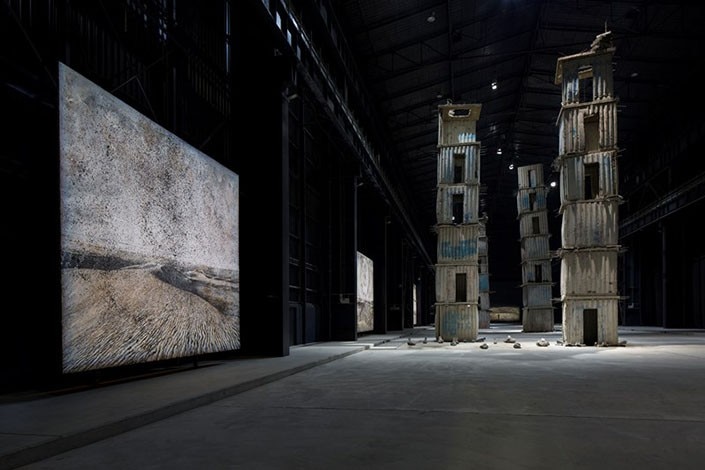
In 2015, curated by Vicente Todolí, five large canvases made by Kiefer between 2009 and 2013 amplify the intensity of The Seven Heavenly Palaces, transforming it into a single installation, titled The Seven Heavenly Palaces 2004-2015. The paintings deepen symbols and themes already present in the towers, such as the tension toward the divine, historical memory, and the relationship between man and the cosmos. In Die Deutsche Heilslinie (2012-2013), arguably the most striking canvas, positioned at the back of the exhibition space, encompasses the history of German spiritual salvation through a rainbow uniting heaven and earth, on which are engraved the names of German philosophers who pursued an ideal of salvation; Following the length of the vertical wall, one encounters the work Jaipur (2009), which recalls Indian astronomical observatories and the NASA numbering of constellations, and the two canvases of Alchemie (2012), united by a scale that evokes alchemical transformation by contrasting salt and sunflower seeds, symbols of sterility and rebirth. Closing the path are two works from the series Cette obscure clarté qui tombe des étoiles (2011), where sunflower seeds become black stars on a white background, resembling negative photographic plates, transforming the landscape into a cosmic vision.
The Seven Heavenly Palaces 2004-2015 is a unique installation that now lives with the institution, lending itself as an extraordinary setting for performances and events.
In 2010, another permanent work entered the space of Pirelli HangarBicocca: Fausto Melotti's La Sequenza, created in 1981 for the major retrospective at Forte del Belvedere, was donated by the artist's foundation and placed at the entrance in the outdoor garden of Pirelli HangarBicocca. Inspired by Greek art, Piero della Francesca and the music of Bach, Fausto Melotti sought a “mathematical forma mentis” to translate into sculpture. La Sequenza is an emblematic example of those ideas: composed of modular Corten slabs arranged according to a play of solids and voids, it expresses an anti-monumental type of sculpture, visually viable as a theatrical space.
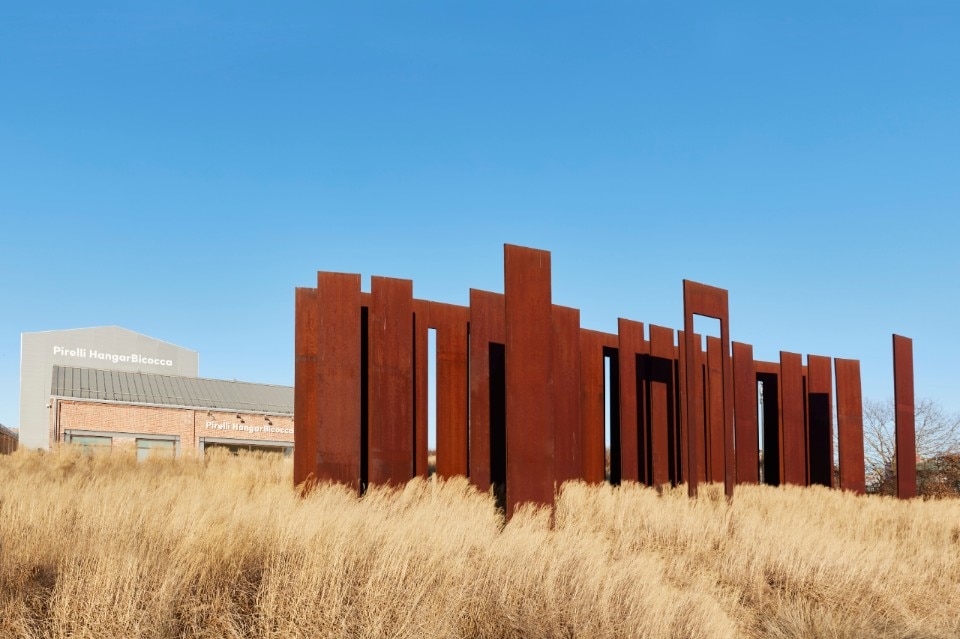
Last but not least, the monumental site-specific mural by naturalized French Tunisian artist eL Seed, visible on the Cube's exterior walls, entitled Waves Only Exist Because the Wind Blows, is dated 2024. Commissioned as part of the “Outside the Cube” project, launched in 2016 with Efêmero by Osgemeos, the work reflects on the themes of belonging and identity. eL Seed combines Arabic calligraphy and street art to create a visual language that speaks of unity, dialogue and collective memory, celebrating Milan as a cultural crossroads and place of welcome.
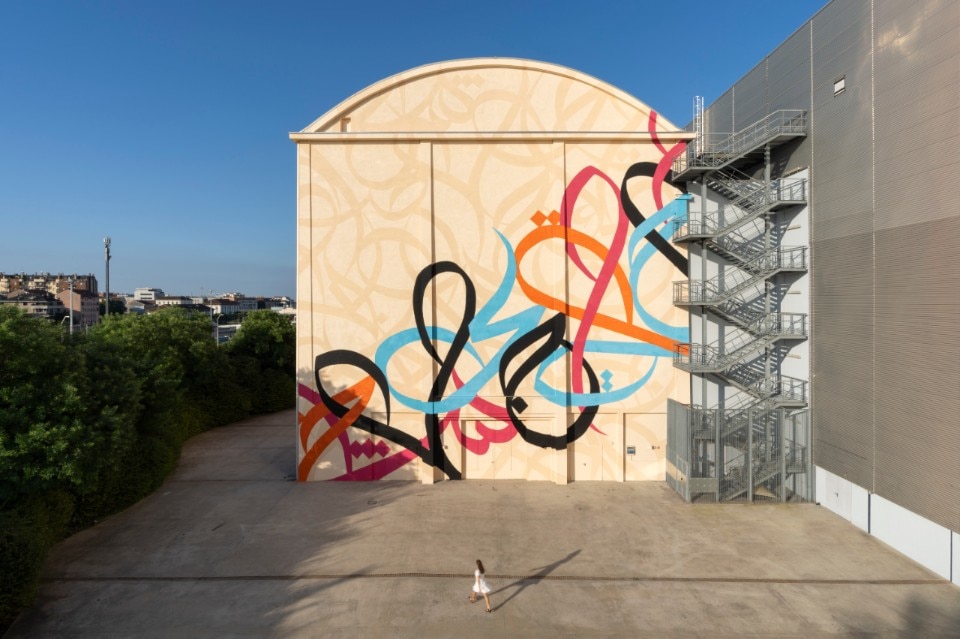
Art to the people: the spaces and activities of Pirelli HangarBicocca
The public-oriented vocation of Pirelli HangarBicocca translates into a set of spaces and initiatives designed to accompany and amplify the visitor experience: once visitors cross the entrance to the large atrium, they come across, on the one hand, the restaurant Iuta Bistrot – heir to the former Dopolavoro Bicocca – which welcomes visitors in a convivial space that extends, even on a sensory level, the idea of the museum as a place of relationship and exchange; on the other, the Kids Room, the space dedicated to educational activities recently reformulated according to the design project of the furniture company Nidi.
Further on are the Lab Room, a meeting and discussion place intended for events open to the public, and the Bookshop, expanded in 2022, which offers a publishing selection with an international slant curated in-house, flanked by exhibition catalogs and special limited editions, the result of direct collaboration with artists taking part in exhibition projects.
Alongside the exhibition activity, the Public Program's dynamic schedule counts curatorial visits, meetings with professionals from the world of art and culture, and shared projects with artists and curators, offering tools for critical insight and active dialogue.
Pirelli and art, a connection that has always been unbreakable
"But what does a company like Pirelli have to do with contemporary art?" one might ask. Well, this connection with culture and the city of Milan on the part of Pirelli as a modern multinational company-Founding and Promoting Partner and main supporter of HangarBicocca-is among the founding values of the company, which has always promoted research in both technological, humanistic and artistic fields: how can we not think of the avant-garde nature of the brand's communication, the intersections with design, such as the toys designed by Bruno Munari (who won the Compasso d'Oro in 1954 thanks precisely to the scimmietta Zizì) and finally, the memorable “Pirelli” magazine published until 1972, in which in addition to contributions of a scientific nature, the writings of well-known personalities of culture also found space, from Giulio Carlos Argan to Dino Buzzati and Italo Calvino to name but a few. And then the Calendario Pirelli, and city commissions, one among them the Pirelli skyscraper designed by Gio Ponti in collaboration with Pier Luigi Nervi, which is today one of the symbols of the city of Milan.
Where is it located?
Pirelli HangarBicocca is located in Milan, at Via Chiese 2, Milan.
How to get there by public transportation?
From Sesto Marelli (Stop M1 Red Line) take bus Line 51 (direction Istria M5) and get off at Via Chiese - HangarBicocca stop or take bus Line 87 (direction Central Station) and get off at Via Chiese stop.
From Ponale (Stop M5 Lilla Line) take Bus Line 51 (Direction Cimiano M2) and get off at the Via Chiese - HangarBicocca stop. At the Ponale stop it is also possible to rent bicycles from the BikeMi service (Station 329 Chiese - F. Testi).
Pirelli HangarBicocca can also be reached by transportation from Central Station, Porta Garibaldi and Greco Pirelli.
How much does it cost?
Admission is free, online booking guarantees priority access to the exhibition spaces, in the chosen time slot. Otherwise, you must register at the entrance.
Opening hours
Thursday through Sunday, 10:30am-8:30pm, with last admission at 7:30pm.
The Bistrot
Iuta Bistrot, a bar and restaurant inside Pirelli HangarBicocca, is open Monday through Wednesday from 11 a.m. to 3 p.m., and Thursday through Sunday, 10:30 a.m. to 10:30 p.m.
The Bookshop
In Pirelli HangarBicocca's Bookshop you will find exhibition catalogs, artists' limited editions and merchandising items. All purchases support the program and activities of Pirelli HangarBicocca. It is open Thursday through Sunday from 10:30 a.m. to 7:30 p.m.
Can dogs enter?
Dogs are not allowed in the indoor spaces, but they are allowed to enter at the Bistro.
How to visit HangarBicocca?
Museum mediators are always available in all exhibition spaces at Pirelli HangarBicocca. You can contact them with any questions or insights about current exhibitions and permanent installations. Guided tours, on the other hand, are scheduled Saturdays at 4 p.m. and Sundays at 11 a.m. and 4 p.m. (unless otherwise noted) and can be purchased on the Pirelli HangarBicocca website.


